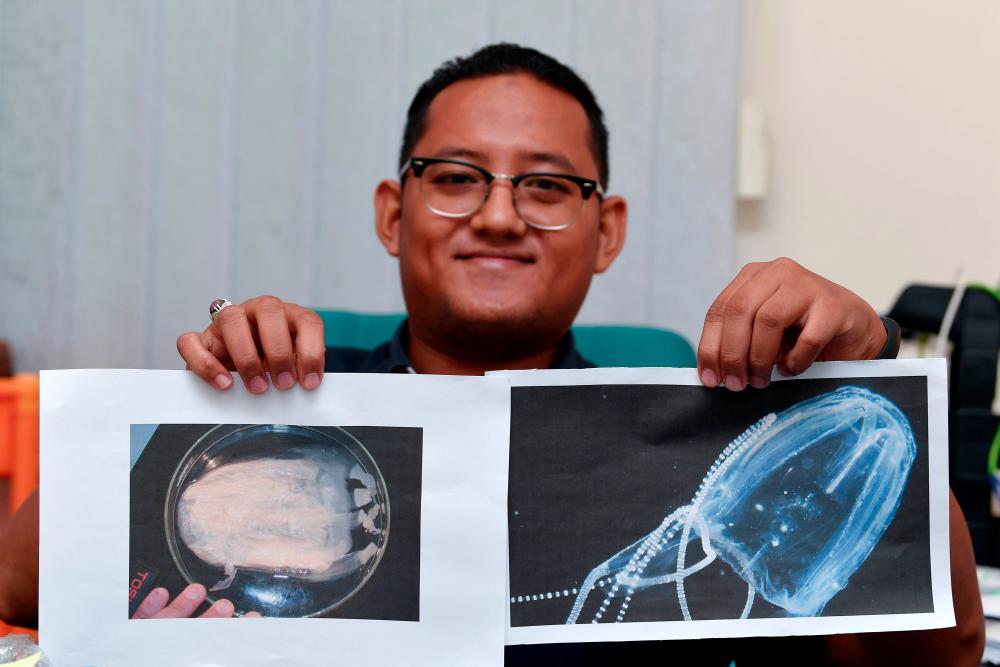KUALA NERUS: A species of jellyfish called the Physalia, whose sting is extremely painful, has been discovered in local waters, said Universiti Malaysia Terengganu (UMT) School of Fisheries and Aquaculture Sciences lecturer, Dr Mohd Fazrul Hisam Abd Aziz.
He said the common jellyfish here are the Chiropsoides Buitendijki and Morbakka, but “last month, we received information that the Physalia — which originates from the Pacific Ocean — was spotted among some jellyfish”.
He said a few days ago he saw a few species in a mass of jellyfish in Kuala Nerus and warns that not only is this kind of scenario dangerous for bathers, it is likely the lethal Irukandji could be among them.
The factors for this probability are the release of ballast water from ships sailing through the Straits of Malacca containing harmful jellyfish, farming runoff and climate change.
“The ballast water from commercial vessels passing through the Straits of Malacca is usually sucked in from tropical countries and there’s a high risk dangerous jellyfish are taken in and set free here,“ he said.
He said phosphorus and nitrogen from agricultural activities boost plankton growth in coastal areas which attracts the invertebrates.
According to him, climate change is influencing the Irukandji jellyfish to go in search of a cooler location, too.
He said 10 to 20 years past, global temperatures would rise just 1°C, but lately it has increased 2°-3°C a year with researchers recording ocean temperatures rising some 2°C this year.
“So this is one reason why marine life go in search of a cool place to be, and the jellyfish is no exception,“ he said.
He said the state government and authorities should identify places where large numbers of jellyfish have been seen and put up red flags, as well as warning signboards, to protect people from going into the sea and getting stung.
He said a sting can take just three minutes to cause cardiac failure, headache, nausea, hypertension and welts.
He said vinegar reportedly inhibits venom discharge from cnidocytes, although scientific evidence is still lacking.
“What you can do is rinse the affected area with sea water, get to a hospital as fast as possible and try to provide as much information as you can – like jellyfish colour and its other features – to help medical personnel treat you,“ he said. — Bernama














